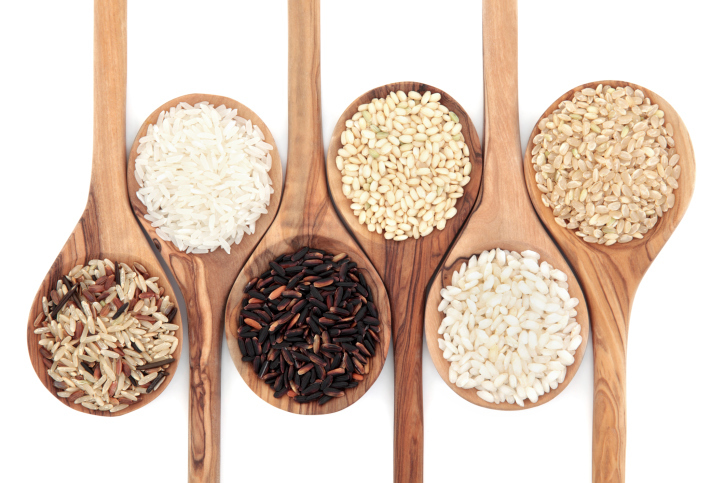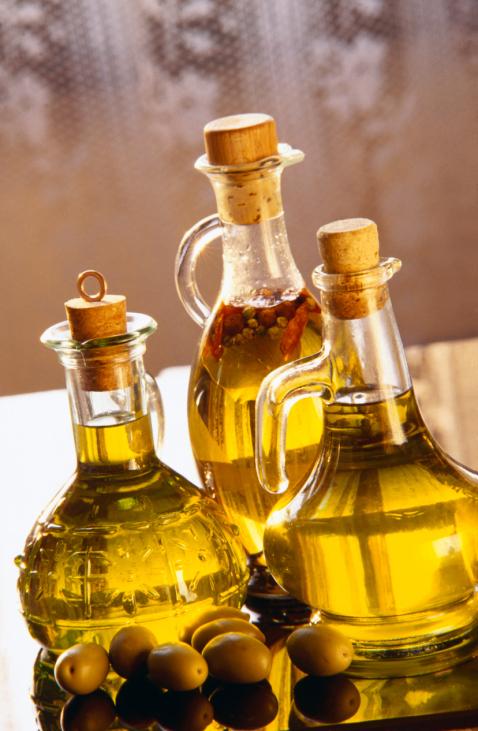There is a common misconception that healthy food is bland and boring – that by making a delicious dish healthy, you have to remove some of its flavor. While it is certainly true that some horribly unhealthy stuff is undeniably delicious, there are a few healthy substitutions you could slip past even the most finicky connoisseur.
Follow this guide to making sure neither your body nor your recipe suffers.
Whole-grain rice is infinitely more nutritious than processed white rice.
Whole-Wheat Pasta
During processing, wheat loses roughly 60 percent of its dietary value, including the most nutritionally important parts, the germ and bran. Fully processed durum wheat, the substance from which the most commonly consumed pastas are made, is heavily refined and contains as little as half the vitamins and minerals, one-third the fiber, and about a quarter of the protein of whole-wheat pasta. You can make the easy and important switch to whole-grain pasta without a significant change in cost, cooking time, or flavor.
Rice
Like pasta, rice has inherited a reputation as an empty-calorie carbohydrate because it is so heavily refined. White rice is the most popular and familiar because it is generally cheaper and can be stored for longer periods of time than whole-grain rice. But you get what you pay for.
Like pasta, milled or refined rice (rice isn’t naturally white) is lacking both bran and germ, stripping it of all but a fraction of its nutritional value. While long-grain rice and exotic rice blends can be pricey, simple brown rice is generally not, and the nutritional difference is exponentially higher.
Oils: Smoking Points
The oils you choose to cook with have everything to do with whether or not the dish you’re making is truly healthy. Not only do different oils have different levels of various kinds of fat, but they have wildly different smoking points. An oil’s smoking point is the maximum temperature it can tolerate before “burning” – which alters its chemical composition and degrades its beneficial elements while releasing dangerous carcinogens into the air and harmful free radicals into the oil itself.
The following are the smoking points, in Fahrenheit degrees, of several common cooking oils. Canola: 425, walnut: 400, flaxseed: 225, olive: 325, grape seed: 420. Never cook above an oil’s smoking point.
Cooking oils have different kinds of fat and different smoking points.
Oils: Types of Fat
There are also different kinds of fat. “Bad” fat, such as trans fat and saturated fat, generally comes from animal products like butter or refined oils. Of the “good” fats, polyunsaturated and monounsaturated are the most common. There are complicated scientific differences between the two, but basically, monounsaturated fats come from peanuts, canolas, nuts, seeds, and avocados. Polyunsaturated fats are found in vegetable oils such as cottonseed, soy, sunflower, and safflower oils.
You know that fruits and vegetables are good for you, and you know that pizza and ice cream before bed aren’t. But for the foodie who likes to cook, making small, unnoticeable alterations to rudimentary ingredients such as oil, rice, and pasta, you can dramatically change the nutritional content of countless recipes, while leaving the flavor and texture virtually unchanged.
Andrew Lisa is a freelance writer living in Los Angeles. He writes about financial software, the food industry, and healthy cooking.
Related articles
- The honey diet: Drop a dress size for the party season by having a spoonful of honey before bed – and following our delicious recipes (dailymail.co.uk)
- PAPER: The great gluten-free scam… (telegraph.co.uk)
- Don’t Let Your Fitness Goals Go This Holiday Season! (info.mueller.edu)



Leave a Reply